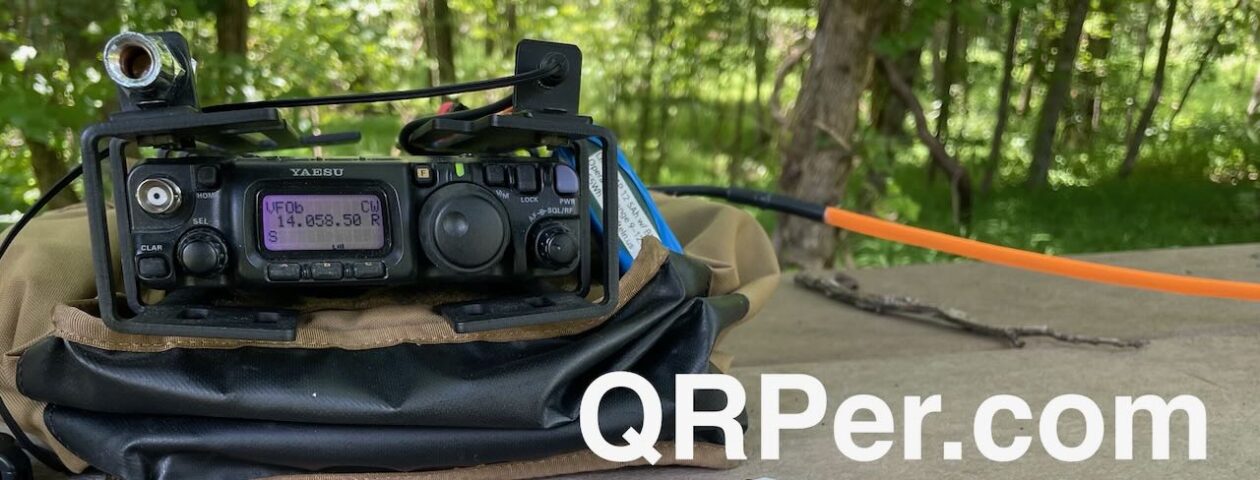DITs and DAHs from Alcatraz
by Leo (DL2COM)
San Francisco Radio Diary – Part 1
“No way!” I said to myself when I saw that Alcatraz Island is an official Parks-on-the-air (POTA) reference which has only been activated four times by two operators.

It surprised me that such a historically relevant site hasn’t seen more ham radio activity in the past – or maybe it has, just not for POTA. I then got super excited as I was packing my bags for San Francisco.
I have missed this foggy beauty so much and it has been many years since I visited the city. I won’t bore you with the ordeal of our travel but it included canceled flights, multiple delays and rescheduling via Berlin and London the next day due to a hostage situation at Hamburg airport. So our already super short trip of 4.5 days shrunk into a good 3 days in SF. So which things to cross off the schedule now? It was clear that this unfortunate situation was certainly not going to eat into my activation budget. Hell no!
I admit since watching “The Rock” (1996) Alcatraz has always been a place of mystery and fascination to me. Those who are interested in reading more about the former fort, military prison and federal penitentiary can do so here.
After I learned that it was also a CW ATNO I instantly said: “Done deal. The ink is dry. I will activate with morse code in the shadows of Sean Connery, Nicolas Cage and Ed Harris”. Of course I would do it plain vanilla style throwing good ol’ wires in trees and staking pointy things in the ground. Yeah right. Sometimes passion does tend to carry you away a wee bit so a little later I gathered myself and started doing some research.

Apparently the first POTA pioneer on Alcatraz was KC1MIJ who managed to get 5 QSOs in with an FM HT in July 2021. I’d say that’s pretty awesome for a location almost as low as sea level. The first successful activation was done on December 3rd 2021 by Elizabeth “Liz” N6LY and her husband Kevin K6YD. Since then both of them had only been back one time in December 2022 for another day to achieve a whopping cumulative 761 phone QSOs in only two days of total operation. Wow! What an achievement. No other hams have tried to activate Alcatraz since.

I didn’t hesitate to write Liz an email and ask about her experience operating from the island as I knew it would probably require some preparation. The POTA website also stated that a permit from the National Park Service (NPS) is required. Luckily Liz replied swiftly with a lot of helpful information and I am very thankful for the email exchange. She specifically pointed out that it is in fact necessary to get a permit (even for simple HT activity) and that she had already applied in July for another day activity this coming December. They are still waiting to hear back from NPS’s office so it does seem quite hard to get approval for a “proper” activation. It is understandable that folks there want to have control over an organized operation where antennas, 100w radios, chairs etc. might need to be set up. With so many tourists visiting each day they also want to make sure that any activity doesn’t interfere with their core business especially on weekends.
Since I really didn’t want to spoil any of the hard preparatory work with NPS that Liz and Kevin had done for the ham radio community as well as respect local processes I wrote an email to the Alcatraz Rangers Office asking for a permit only a few days before my arrival. I knew it was a long shot and highly unlikely that they’d get back to me in time. So I called them every morning and afternoon the days after to follow up but was unsuccessful reaching them on any channel. By that point I had almost given up. However there were plenty of other options for activations so I had a blast in/on several SOTA/POTA references in SF which I will report on later.

On our last day I woke up and thought “Man, I can’t just leave the Bay Area and not activate Alcatraz.” Since one of my appointments got canceled short-term I didn’t think long, jumped on an Uber to Pier 33 and off I was (yeeeees, online tickets were still available). Continue reading DITs and DAHs from Alcatraz



























